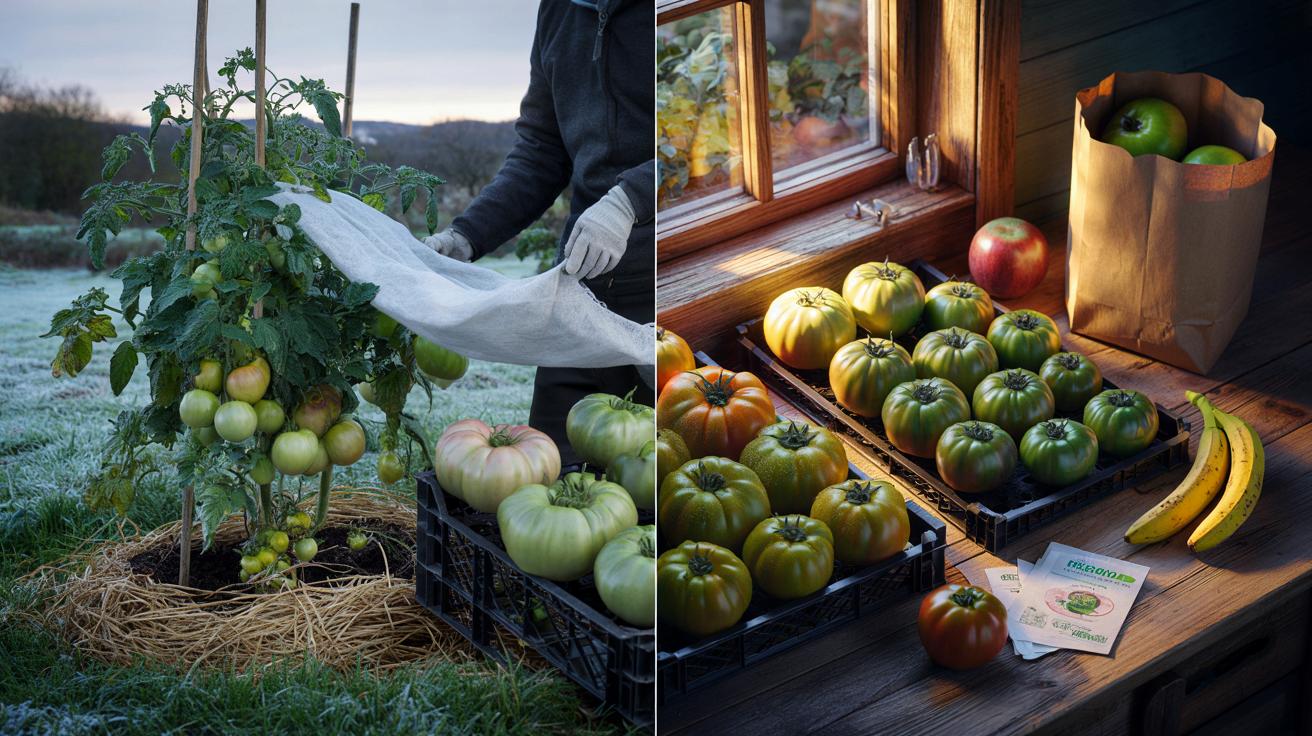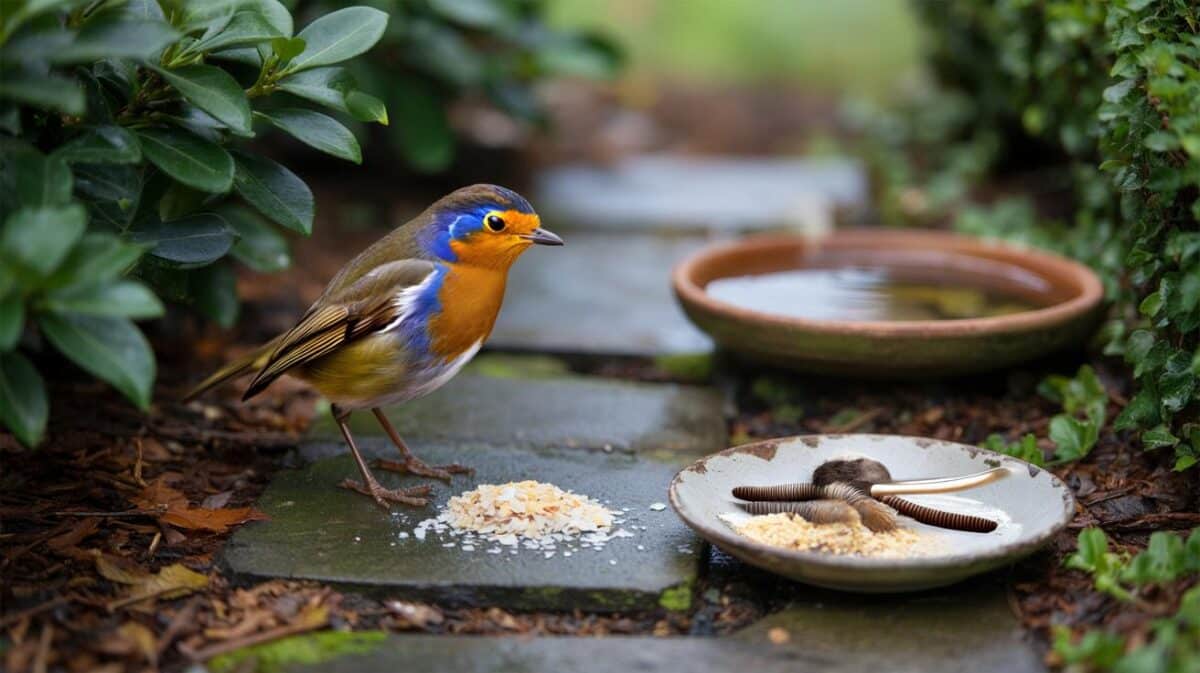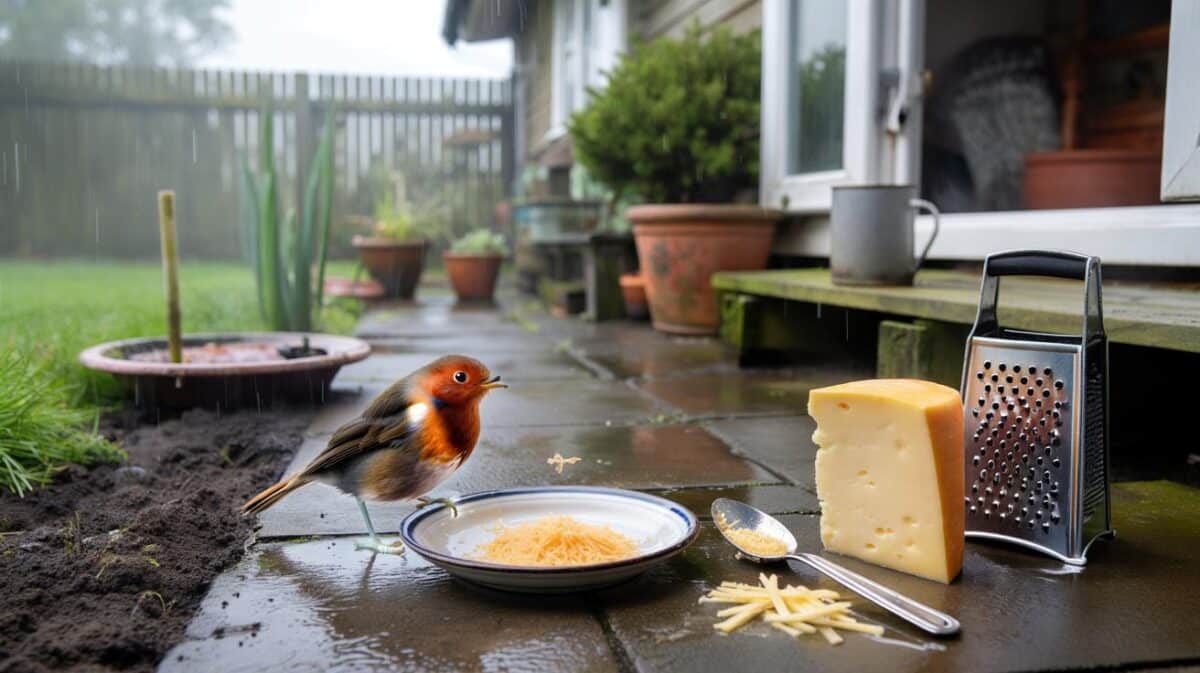Across Britain, anxious growers weigh timing, risk and what to bring indoors.
Nights dropping under 10°C stall ripening and invite damage. The first frost can wipe out months of care. Seasoned growers use three simple moves to beat the cold, cut waste and keep flavour on track.
Why timing beats the first frost
When forecasts hint at single-digit nights, the clock starts. Below 10°C, ripening slows. Around 2°C, soft tissue suffers. At 0°C, cells burst. Watch local predictions, humidity levels and wind. A sudden clear night after rain raises frost risk. Plan your harvest the day the outlook dips.
Pick at the mature-green stage: firm fruit, full size, a pale sheen, and a short piece of stem left on to reduce moisture loss.
What to pick the night before a cold snap
- Choose tomatoes that feel firm, with pale green to light straw tones or the first blush of colour.
- Leave a 1–2 cm stem attached. It helps storage and slows dehydration.
- Reject split or bruised fruit. One spoiled tomato can ruin the tray.
- If frost is imminent and you cannot finish, drape plants with garden fleece or an old cotton sheet at dusk. That buys a crucial few hours.
How to ripen indoors without losing flavour
Once safe inside, you have two reliable routes: slow warmth with light, or controlled darkness with ethylene from ripe fruit. Both work. Your space and schedule decide.
The window tray method
Spread tomatoes in a single layer on a tray, crate or newspaper. Keep them apart to stop rot from spreading. Aim for 18–22°C in a bright room with indirect light. Check every two days. Rotate fruit for even colour. Expect 10–15 days to reach a full, rich red, depending on variety and starting stage.
The paper bag method
Place tomatoes in a kraft paper bag or a cardboard box. Add one ripe apple or banana. These fruits release ethylene, a natural ripening signal. Close the top loosely. Keep at room temperature, away from sun. Most batches turn in 5–7 days.
Never refrigerate green tomatoes. Cold below 10°C halts ripening enzymes and damages texture, even if colour later develops.
| Method | Temperature | Light | Expected time | Main risk |
|---|---|---|---|---|
| Window tray | 18–22°C | Bright, indirect | 10–15 days | Sun scorch if placed in direct sun |
| Paper bag with apple/banana | 18–22°C | Dark | 5–7 days | Condensation and mould if overfilled |
Sort by shade of green
Do not pile everything together. Separate by maturity. Light green with a faint blush moves fast. Deep emerald needs longer and may never redden fully. Sorting saves trays and gives better flavour.
Fast-track the near-ripe
Use near-ripe fruit first. They suit pasta sauces, roasted salads and quick pan salsas within a few days. They also ripen cleanly on a warm sill if you keep them spaced and dry.
Cook with the stubborn green ones
Dark green tomatoes shine in the kitchen. Their acidity lifts chutney. Their pectin sets jam. Their texture holds in fritters and pickles. Try this simple sweet preserve that warms toast on cold mornings.
- Green tomato jam: 500 g green tomatoes, 250 g sugar, the juice of half a lemon. Chop, then simmer to a soft set for 25–35 minutes. Skim, pot hot, and seal.
- Quick chutney: 1 kg green tomatoes, 250 g onions, 150 g brown sugar, 250 ml cider vinegar, 1 tsp salt, ginger and mustard seeds. Simmer 45–60 minutes until thick and glossy.
- Fritters: slice 1 cm thick, dip in seasoned cornmeal, and shallow-fry until crisp. Serve with yoghurt and herbs.
Nothing wasted: near-ripe fruit fills the fruit bowl, while stubborn greens stock the pantry.
Old know-how for modern plots
Old hands rely on simple routines. They mulch the beds to buffer soil temperatures. They water in the morning to keep foliage dry overnight. They prune for airflow, which reduces late blight pressure when damp nights return. They slip a fleece over plants at dusk, then remove it after sunrise to avoid trapped moisture. Each habit saves fruit and time.
The same approach fits balconies and allotments. A single grow bag can host a mini-harvest that ripens indoors on a windowsill. A small roll of fleece weighs little and sits by the back door. Clean crates and a stack of newspapers make a portable ripening station in any spare corner.
Extra tips, risks and smart add-ons
Ethylene accelerates ripening, but it also shortens the life of leafy greens and cucumbers. Keep ripening trays away from salads. Vent rooms gently to prevent stale air and fungal spread. Aim for a dry, clean surface under fruit. Replace damp newspaper. Wash hands and knives before handling to limit rot.
- Target humidity around 85–90% to prevent shrivelling without inviting mould. A dry room benefits from a bowl of water placed nearby, not touching the fruit.
- Inspect trays daily. Remove any soft fruit at once. One bad tomato can trigger a chain reaction.
- If late blight strikes, do not ripen badly infected fruit indoors. Bag and bin them. Do not add to the compost heap.
- Stagger batches. Keep a fast lane for blushing fruit and a slow lane for deep green fruit.
Planning pays. A 5 m row can leave you with 6 kg of green tomatoes after a chilly week. Using the three-step plan, saving 95% gives roughly 5.7 kg of usable fruit. That translates into two weeks of fresh salad tomatoes, plus five or six jars of chutney, at the cost of a £6 fleece and an hour of sorting.
Fancy pushing the harvest further? Try dehydrating thin slices of green tomato for a tangy pantry staple. Blitz to a powder and use it as a seasoning in soups and rubs. Or set up a simple taste test: one tray in light, one in a paper bag with an apple. Note times, textures and flavours. That small experiment tunes next year’s routine to your home’s conditions and your palate.







